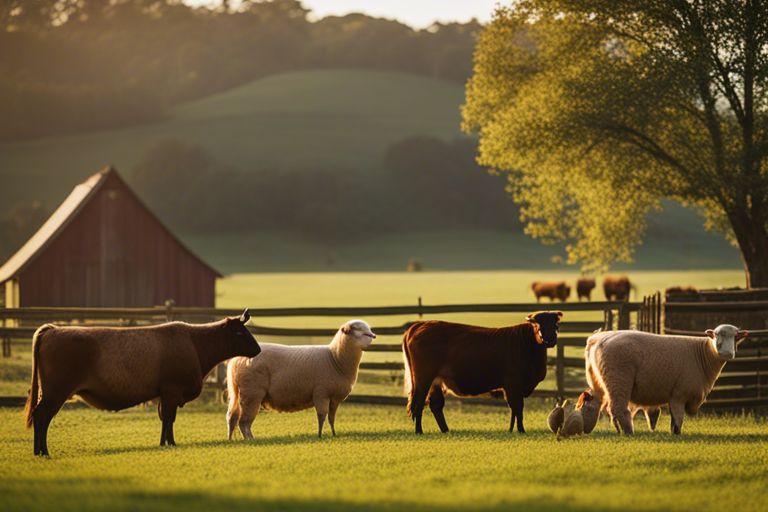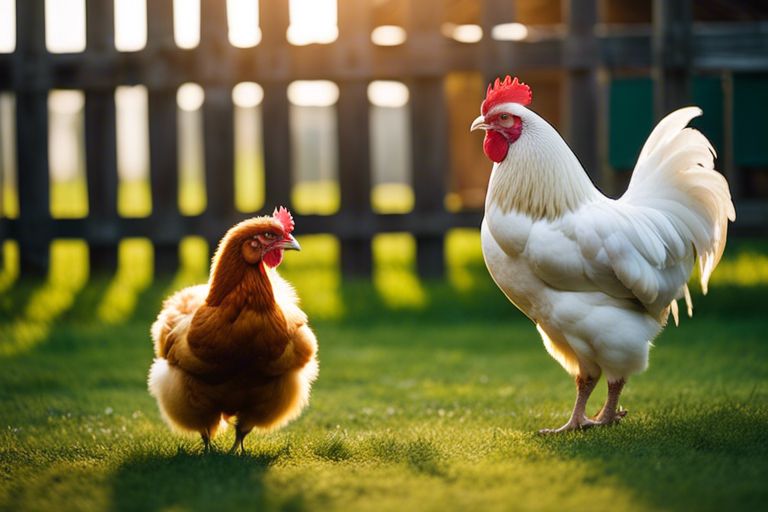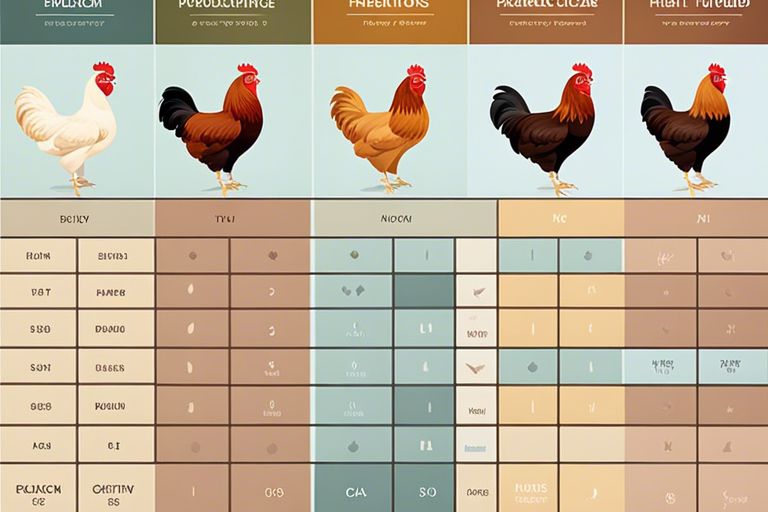With the increasing demand for sustainable and efficient livestock production methods, crossbreeding different livestock breeds has become a popular practice among farmers and breeders. By combining the desirable traits of two or more breeds, such as disease resistance, high productivity, and adaptability to different climates, farmers can create offspring that exhibit the best qualities of both parent breeds. This results in hybrid animals that are not only hardier and healthier but also more economically viable in the long run. In this blog post, we will explore the numerous benefits of crossbreeding different livestock breeds and why it is a valuable strategy for modern agricultural practices.
Genetic Diversity and Health
Improved Disease Resistance
The benefits of crossbreeding different livestock breeds are vast, with one major advantage being improved disease resistance. An array of genetic combinations can lead to animals with stronger immune systems, making them less susceptible to common diseases that could impact a single breed. This genetic diversity allows for a broader range of defense mechanisms against various pathogens, ultimately resulting in healthier livestock.
Enhanced Overall Vigor
Another significant benefit of crossbreeding is enhanced overall vigor in livestock. Disease resistance is just one aspect of the improved health that results from genetic diversity. Crossbreeding can lead to animals with better growth rates, higher fertility, and overall vitality, making them more resilient and productive in various farming conditions.
Plus, when different breeds are crossed, it can also reduce the prevalence of genetic disorders that are common in purebred animals. By combining the strengths of different breeds, farmers can produce livestock that are not only healthier but also exhibit a wider range of beneficial traits.
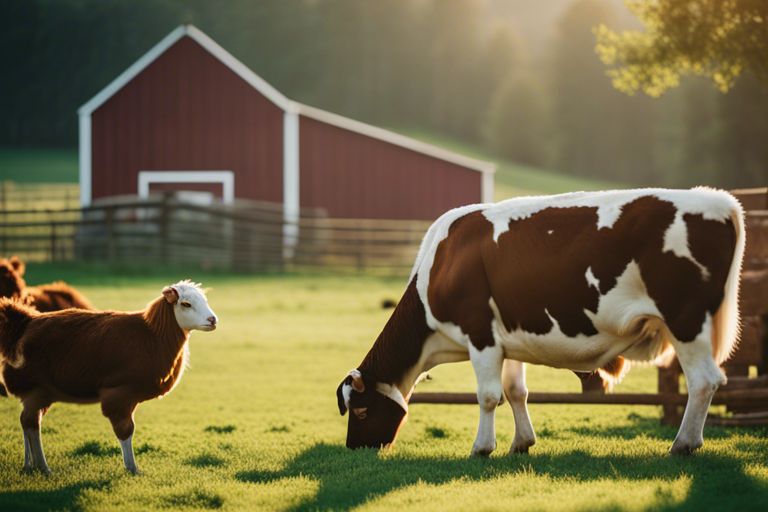
Production and Performance Enhancement
Growth Rates and Feed Efficiency
You can significantly enhance the growth rates and feed efficiency of your livestock by crossbreeding different breeds. This combination often results in offspring that exhibit improved weight gain and require less feed to reach desired market specifications. For example, crossbreeding dairy cows with beef cattle can result in calves that grow faster and convert feed into muscle more efficiently.
Milk and Meat Quality Improvements
The crossbreeding of different livestock breeds can also lead to notable improvements in milk and meat quality. This can include an increase in milk production, higher protein content, and better marbling in meat. By carefully selecting parent breeds with desired traits, you can create hybrids that offer superior quality products for consumers.
With the right breeding strategies, farmers can capitalize on the complementary strengths of different breeds to achieve an overall improvement in production and performance metrics. This can lead to a more efficient operation and higher-quality products that meet market demands and command premium prices.
Adaptability and Sustainability
Climate Resilience in Crossbred Livestock
After crossbreeding different livestock breeds, one of the most significant benefits is the enhancement of climate resilience in the resulting animals. By mixing genetic traits from diverse breeds, crossbred livestock can better adapt to various environmental conditions, making them more resilient to climate changes and extreme weather events.
Sustainability and Environmental Impact
After crossbreeding different livestock breeds, sustainability and environmental impact are key factors to consider. Crossbreeding can lead to improved efficiency in resource utilization, such as feed and water, as well as reduced greenhouse gas emissions per unit of livestock product. This can contribute to a more sustainable and environmentally friendly livestock production system.
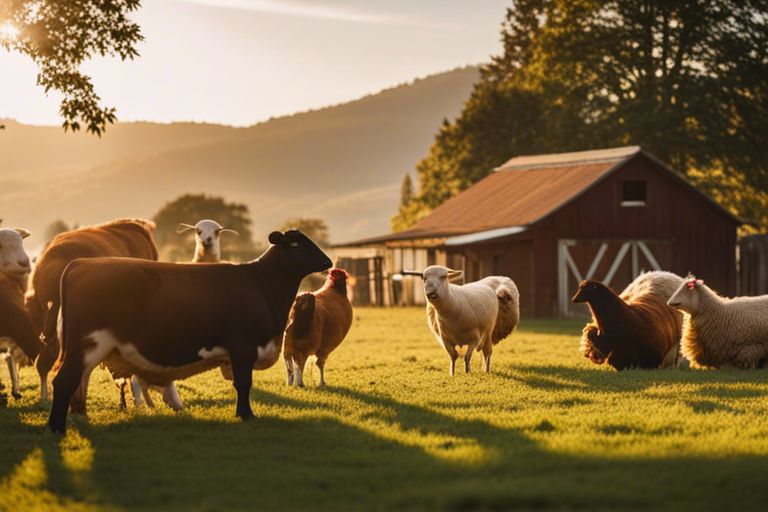
Economic Advantages
Cost-Effectiveness of Crossbreeding
To maximize profits in livestock farming, it is imperative to consider the cost-effectiveness of crossbreeding different breeds. By carefully selecting breeds with complementary traits, farmers can achieve a higher efficiency in production. Crossbreeding can lead to offspring that exhibit desirable characteristics such as improved growth rates, disease resistance, or better feed conversion rates. These advantages can result in lower input costs and higher returns on investment, making crossbreeding a financially beneficial practice for livestock farmers.
Market Demands and Profitability
The livestock market is constantly evolving, with changing consumer preferences and demands. Crossbreeding different livestock breeds can help farmers adapt to market trends and meet the growing demand for specific traits in livestock. By breeding animals that possess qualities sought after in the market, farmers can command higher prices for their products and increase profitability. Additionally, diversified breeding practices can help farmers explore niche markets and capitalize on profitable opportunities within the industry.
Advantages: By crossbreeding different livestock breeds, farmers can not only reduce costs and increase efficiency in production but also enhance their competitiveness in the market. Through careful selection and breeding practices, farmers can meet consumer demands, command premium prices for their products, and ultimately improve the overall profitability of their livestock operations.
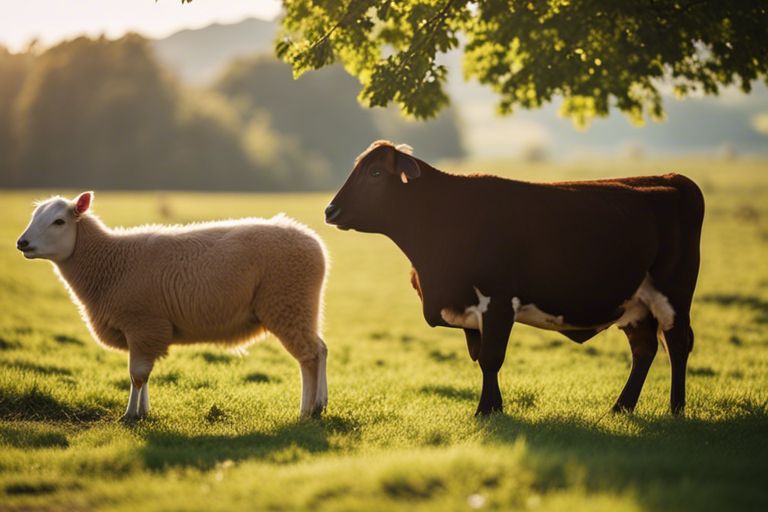
Managerial Considerations
Breeding Program Management
All successful crossbreeding programs require meticulous management to ensure the desired outcomes. With careful planning and selection of parental stock, breeders can optimize genetic diversity and hybrid vigor in the offspring. It is imperative to have a clear breeding objective and strategy in place to guide the program towards success. Regular monitoring and evaluation of breeding outcomes are crucial to adjust the program as needed.
Challenges in Crossbreeding Strategies
Breeding different livestock breeds together presents unique challenges that breeders must overcome to achieve their goals. A major challenge is maintaining genetic purity, especially in open breeding systems where animals may have access to multiple mates. Breeders must also consider the potential for undesirable traits to emerge in the offspring due to genetic interactions between different breeds. Close attention to selective breeding and culling practices is necessary to address these challenges effectively.
Additionally, managing the logistics of crossbreeding, such as breed compatibility, breeding season synchronization, and market demand for hybrid offspring, requires careful consideration and coordination. Breeders must be prepared to adapt their strategies to address these challenges and optimize the outcomes of their crossbreeding programs.
Ethical and Welfare Aspects
Welfare Implications of Crossbreeding
Welfare implications of crossbreeding different livestock breeds need to be carefully considered to ensure the health and happiness of the animals involved. While crossbreeding can sometimes result in animals with hybrid vigor and increased resilience to diseases, it can also lead to negative consequences such as genetic disorders or mismatches in traits that affect the well-being of the animals.
Ethical Breeding Practices
Any breeding practices, including crossbreeding, should prioritize the ethical treatment of animals. It is necessary to conduct breeding programs in a responsible manner, considering the welfare of the animals at every step. This includes providing proper care, adequate living conditions, and minimizing any potential harm or suffering that may arise from the breeding process.
To ensure ethical breeding practices, breeders should adhere to strict guidelines and codes of conduct that prioritize the well-being of the animals above all else. This includes regular health checks, genetic testing to prevent the propagation of hereditary diseases, and responsible breeding for the purpose of improving the overall welfare and quality of life for the animals.
Conclusion
Ultimately, crossbreeding different livestock breeds offers a wide range of benefits to farmers and the agricultural industry as a whole. By combining the desirable traits of various breeds, farmers can create animals that are more resistant to diseases, produce higher yields of meat, milk, or wool, and thrive in different environmental conditions. This can lead to improved profitability for farmers, increased food production to meet growing demands, and the development of more sustainable farming practices. Embracing the practice of crossbreeding is a valuable tool for ensuring the health and productivity of livestock populations, contributing to a more resilient and efficient agricultural system.
FAQ
Q: What are the benefits of crossbreeding different livestock breeds?
A: Crossbreeding different livestock breeds can result in improved genetics, higher productivity, and increased resistance to diseases.
Q: How does crossbreeding improve genetics in livestock?
A: Crossbreeding introduces new genetic traits into the livestock population, leading to stronger and healthier animals with better performance.
Q: What is hybrid vigor, and how does it benefit crossbred livestock?
A: Hybrid vigor, also known as heterosis, is the tendency of crossbred animals to exhibit improved traits compared to purebred animals, such as increased growth rate, fertility, and disease resistance.
Q: Can crossbreeding help in developing livestock breeds with specific characteristics?
A: Yes, crossbreeding allows breeders to selectively combine traits from different breeds to create animals with desired characteristics, such as increased milk production or meat quality.
Q: How does crossbreeding contribute to the sustainability of livestock farming?
A: By improving genetics and increasing productivity, crossbreeding helps farmers produce more food with fewer resources, leading to a more sustainable and efficient livestock farming system.
Q: What are some examples of successful crossbreeding programs in livestock farming?
A: Some successful examples of crossbreeding include the development of hybrid chicken breeds for egg or meat production, as well as crossbreeding dairy cattle to improve milk yield and quality.
Q: Are there any challenges or risks associated with crossbreeding different livestock breeds?
A: While crossbreeding offers many benefits, challenges such as maintaining breed purity, genetic diversity, and potential health issues in offspring should be carefully considered and managed by breeders.
